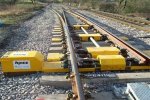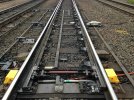In any event, even if a RHTT train didn't run, drivers are under instructions to carry out regular brake tests on their journey.
Perhaps at where you work that's true but it's by no means a nationally required standard: regular brake tests are only mandated during snow fall or lying snow being disturbed by trains.
Partly because leaf contamination can change multiple times in the space of yards, let alone miles.
Wisdom and experience does of course dictate that the areas which are known to be bad or potentially hazardous in autumn are treated with more care, braking earlier and lighter.
With 12 seconds between the driver's initial brake and his emergency brake, I would think he was indeed braking in good time given the expected conditions, but sometimes it can be suddenly so much worse than expected there is little that can be done (and what there is, he did).


